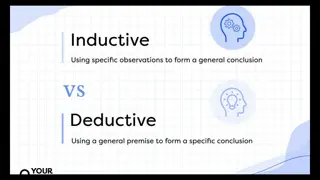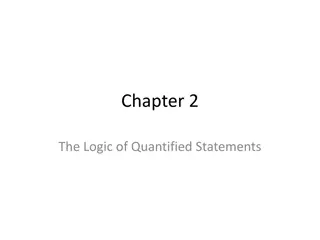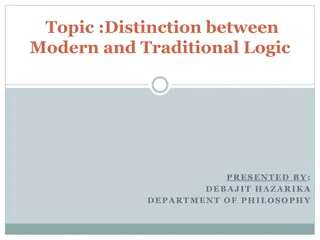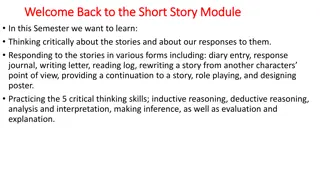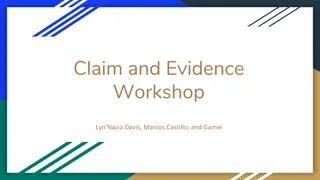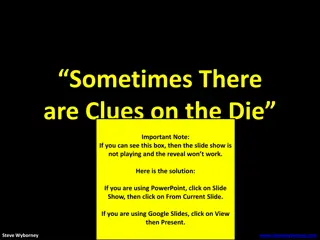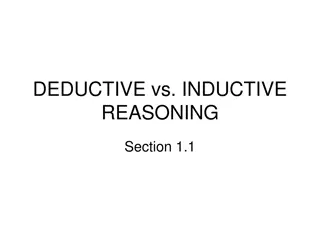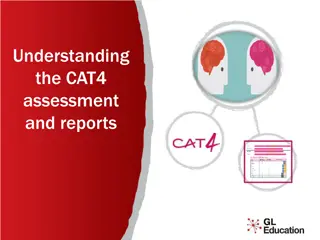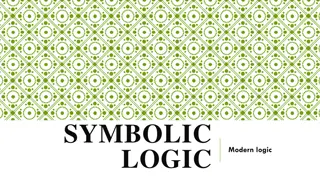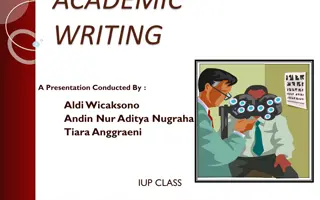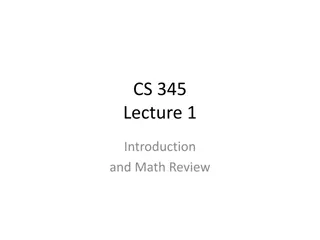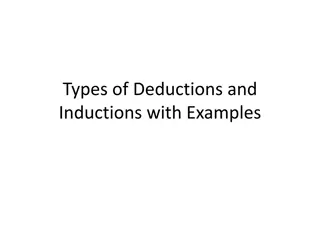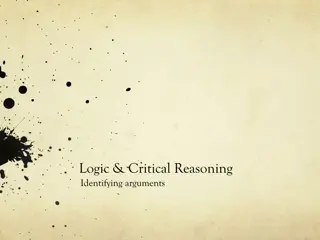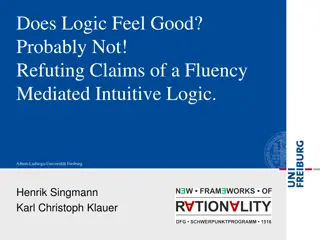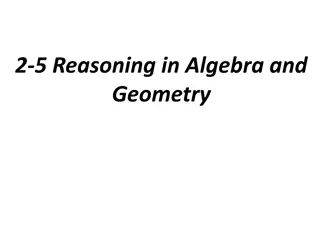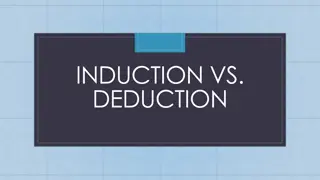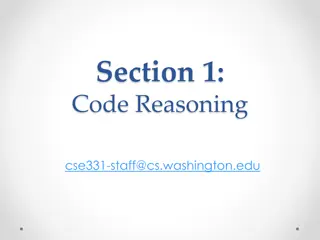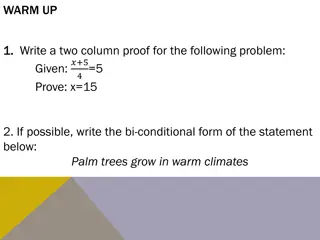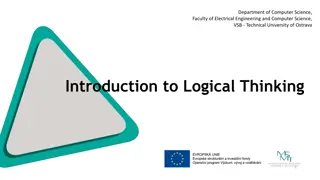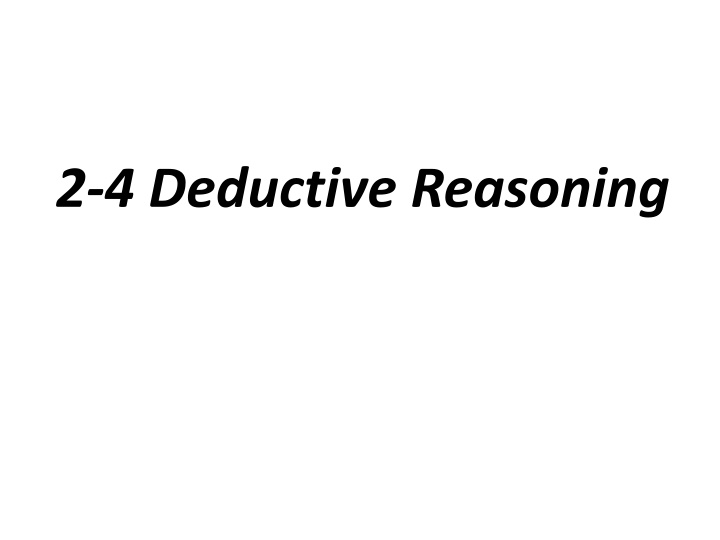
Deductive Reasoning: Logical Conclusions & Syllogisms
Explore deductive reasoning with examples of logical conclusions using the Law of Detachment and Law of Syllogism. Learn to draw conclusions based on given information about angles, figures, and relationships. Enhance your problem-solving skills in geometry and logic.
Uploaded on | 0 Views
Download Presentation

Please find below an Image/Link to download the presentation.
The content on the website is provided AS IS for your information and personal use only. It may not be sold, licensed, or shared on other websites without obtaining consent from the author. If you encounter any issues during the download, it is possible that the publisher has removed the file from their server.
You are allowed to download the files provided on this website for personal or commercial use, subject to the condition that they are used lawfully. All files are the property of their respective owners.
The content on the website is provided AS IS for your information and personal use only. It may not be sold, licensed, or shared on other websites without obtaining consent from the author.
E N D
Presentation Transcript
Deductive Reasoning (logical reasoning): the process of reasoning logically from given statements or facts to a conclusion
Problem 1: Using the Law of Detachment What can you conclude from the given true statement? If a student gets an A on a final exam, then the student will pass the course. Felicia got an A on her history final exam.
What can you conclude from the given true statement? If a ray divides an angle into two congruent angles, then the ray is an angle bisector. ?? ??????? < ??? ?? ? ?? < ??? < ???
Law of Syllogism: allows you to state a conclusion from two true conditional statements when the conclusion of one statement is the hypothesis of the other statement
Problem 2: Using the Law of Syllogism What can you conclude from the given information If a figure is a square, then the figure is a rectangle. If a figure is a rectangle, then the figure has four sides.
What can you conclude from the given information If you do gymnastics, then you are flexible. If you do ballet, then you are flexible
Problem 3: Using the Laws of Syllogism and Detachment What can you conclude from the given information If you live in Accra, then you live in Ghana. If you live in Ghana, then you live in Africa. Alisa lives in Accra.

